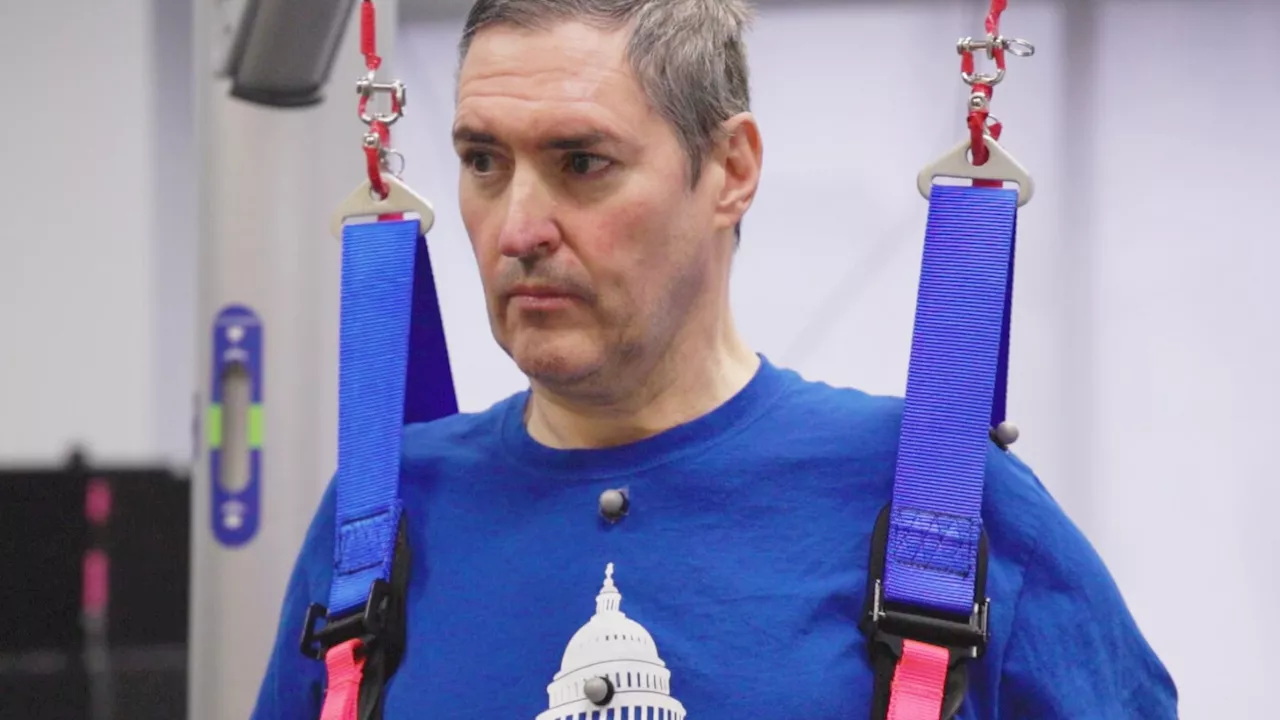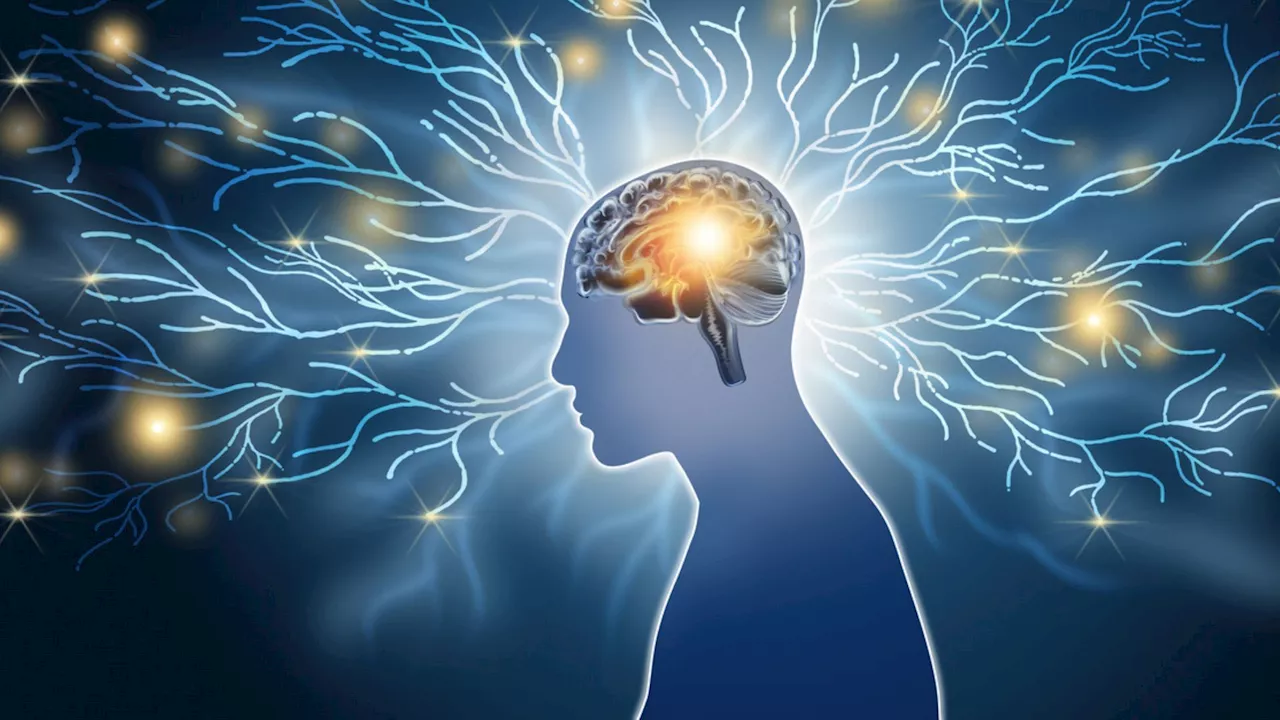A new study shows that spinal cord stimulation can improve muscle function in people with spinal muscular atrophy (SMA). Three participants in a pilot study were able to stand and walk more easily after an implanted device zapped their spinal cord.
Read full article: Retrial begins for man accused of estranged wife’s 2017 murderFire significantly damages house in neighborhood north of downtown, SAFD saysOrlando welcomes the grand return of The Big Bounce House America, making waves as the world's largest touring inflatable event!Get ready for some fabulous Insider Deals that will help you enjoy a cozy night's sleep and some that will elevate your style and beauty game.
The Pitt researchers implanted electrodes over the lower spinal cord of three adults with SMA and tested their muscle strength, fatigue, range of motion and changes in gait and walking distance when the device was firing and when it was turned off. All three participants significantly increased how far they could walk in six minutes, and one who initially couldn’t stand from a kneeling position could by the study’s end, Capogrosso said. And McCullough’s gait changed so that each step was about three times longer.
McCullough said even when the stimulator was turned off, some nights his legs “would just feel supercharged.”
SPINAL MUSCULAR ATROPHY MEDICAL TECHNOLOGY SPINAL CORD STIMULATION GENE THERAPY NEUROSCIENCE
United States Latest News, United States Headlines
Similar News:You can also read news stories similar to this one that we have collected from other news sources.
 Spinal Cord Stimulation Shows Promise for Muscle-Wasting DiseaseResearchers report promising results from a pilot study using spinal cord stimulation to treat spinal muscular atrophy (SMA). Three adults with the disease experienced improvements in muscle strength, function, and walking ability after receiving the treatment.
Spinal Cord Stimulation Shows Promise for Muscle-Wasting DiseaseResearchers report promising results from a pilot study using spinal cord stimulation to treat spinal muscular atrophy (SMA). Three adults with the disease experienced improvements in muscle strength, function, and walking ability after receiving the treatment.
Read more »
 Spinal Cord Stimulation Shows Promise in Treating Muscle-Destroying DiseaseA groundbreaking study at the University of Pittsburgh has shown that spinal cord stimulation therapy can significantly improve muscle strength and function in adults with spinal muscular atrophy (SMA). The therapy, which involves implanting electrodes over the lower spinal cord and delivering low levels of electrical stimulation, offers hope for patients who have long been resigned to the progressive nature of their disease.
Spinal Cord Stimulation Shows Promise in Treating Muscle-Destroying DiseaseA groundbreaking study at the University of Pittsburgh has shown that spinal cord stimulation therapy can significantly improve muscle strength and function in adults with spinal muscular atrophy (SMA). The therapy, which involves implanting electrodes over the lower spinal cord and delivering low levels of electrical stimulation, offers hope for patients who have long been resigned to the progressive nature of their disease.
Read more »
 Fibromyalgia Pain Might Start in the Spinal Cord, Study SuggestsResearchers found spinal disinhibition in people with fibromyalgia, adding new clues about the role of central pain processing in this condition.
Fibromyalgia Pain Might Start in the Spinal Cord, Study SuggestsResearchers found spinal disinhibition in people with fibromyalgia, adding new clues about the role of central pain processing in this condition.
Read more »
 Nerve Stimulation Trial Offers Hope for Stroke RecoveryA non-invasive nerve stimulation treatment being trialled in Leeds could significantly improve the lives of stroke patients. Transcutaneous vagus nerve stimulation (TVNS) uses a pacemaker-like device connected to an earpiece to help patients regain arm movement. Occupational therapist Vicky Carruthers has seen the trial restore independence and dignity to patients, offering a less invasive alternative to previous surgical methods.
Nerve Stimulation Trial Offers Hope for Stroke RecoveryA non-invasive nerve stimulation treatment being trialled in Leeds could significantly improve the lives of stroke patients. Transcutaneous vagus nerve stimulation (TVNS) uses a pacemaker-like device connected to an earpiece to help patients regain arm movement. Occupational therapist Vicky Carruthers has seen the trial restore independence and dignity to patients, offering a less invasive alternative to previous surgical methods.
Read more »
 Overcoming spasticity to help paraplegics walk againThanks to new high-frequency electrical stimulation that blocks spasticity, two paralyzed patients suffering from muscle stiffness after spinal cord injury benefit from rehabilitation protocols for walking again.
Overcoming spasticity to help paraplegics walk againThanks to new high-frequency electrical stimulation that blocks spasticity, two paralyzed patients suffering from muscle stiffness after spinal cord injury benefit from rehabilitation protocols for walking again.
Read more »
 Ultrasound Brain Stimulation Shows Promise for Treating Mental Health ConditionsA new National Health Service (NHS) trial is exploring the use of ultrasound to directly influence brain activity and treat mental health conditions like depression and anxiety. The trial will evaluate a brain-computer-interface (BCI) device that uses ultrasound to both monitor and stimulate specific clusters of neurons. If successful, this non-invasive approach could revolutionize the treatment of mental health disorders.
Ultrasound Brain Stimulation Shows Promise for Treating Mental Health ConditionsA new National Health Service (NHS) trial is exploring the use of ultrasound to directly influence brain activity and treat mental health conditions like depression and anxiety. The trial will evaluate a brain-computer-interface (BCI) device that uses ultrasound to both monitor and stimulate specific clusters of neurons. If successful, this non-invasive approach could revolutionize the treatment of mental health disorders.
Read more »
